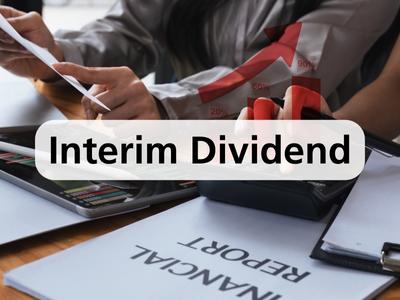Interim Dividend Unraveled
 An interim dividend is a pre-meeting payout given to shareholders before the company’s annual general meeting (AGM) and prior to the publication of its full-year financial results. Normally, this form of dividend is announced alongside the company’s mid-year fiscal statements. More often than not, the interim dividend tends to be less than the final dividend.
An interim dividend is a pre-meeting payout given to shareholders before the company’s annual general meeting (AGM) and prior to the publication of its full-year financial results. Normally, this form of dividend is announced alongside the company’s mid-year fiscal statements. More often than not, the interim dividend tends to be less than the final dividend.
Interim Dividends: A Closer Look
When people invest in companies by acquiring stocks or bonds, they gain different types of benefits. Bonds, on the one hand, come with a fixed interest rate and grant investors a higher claim than shareholders should a company go bankrupt. However, bondholders do not benefit from any hikes in share prices.
On the other hand, stocks don’t carry an interest rate, but they can yield dividends in certain situations. Therefore, shareholders can benefit from both interim and final dividends, as well as capitalize on any increases in share price propelled by growth in profits. Interim dividends are announced by the board of directors and unlike final dividends, don’t need the approval of shareholders.
The so-called ordinary or final dividends are subject to shareholders’ approval at the AGM, once the company’s earnings have been verified. While these dividends may be paid either in cash or shares on an annual basis, interim dividends can be distributed at any time throughout the year.
Calculating an Interim Dividend
Typically, when a company decides to issue both an interim and a final dividend within the same fiscal year, the interim dividend is set at a lesser amount. For instance, if annual earnings come in below expectations, the board of directors may opt to keep the interim dividend low to protect the company’s operating capabilities.
Interim Dividend Payouts: The Process
Interim dividends are usually paid from accumulated earnings, which include profits from previous years. They’re generally not distributed from the current year’s earnings, simply because these earnings aren’t totally realized until the interim dividend is declared.
Interim vs. Final Dividends
Dividends are allotted based on the amount of shares an individual investor holds. For example, if you own 100 shares in company A, and they declare a $1 dividend annually, you stand to receive $100 in dividends that year. If the company doubles its dividend to $2 per share, your dividend income would be $200 annually.
Final dividends are announced and distributed yearly alongside the company’s earnings. Unlike interim dividends, which are disbursed from retained earnings, final dividends are declared once the exact earnings have been determined.


